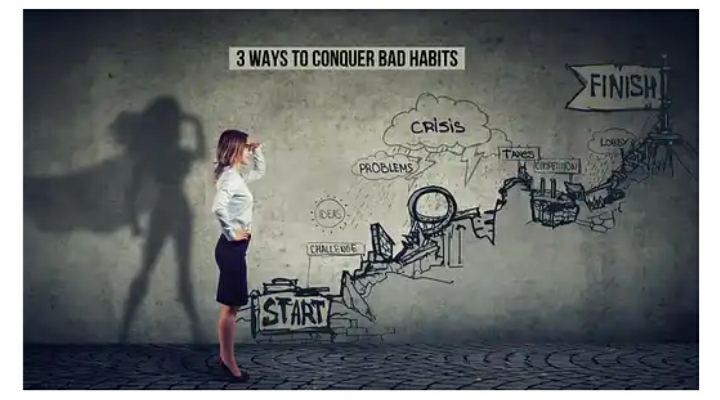How To Conquer Bad Habit
Bad habits are behaviors that negatively affect your health, happiness, or productivity. They can range from smoking, drinking, procrastinating, oversleeping, to biting your nails, checking your phone too often, or spending too much time on social media. Whatever your bad habit is, you can conquer it by following these steps:
Step 1: Identify your bad habit and its triggers
The first step to conquer a bad habit is to recognize what it is and what causes it. A bad habit is usually a response to a trigger, which can be an external cue (such as a stressful situation, a tempting object, or a familiar environment) or an internal cue (such as a feeling, a thought, or a craving). For example, you may smoke when you are stressed, drink when you are bored, or check your phone when you are lonely.
To identify your bad habit and its triggers, you can keep a journal or use an app to track when, where, how, and why you engage in the behavior. You can also ask yourself questions such as:
– What do I get out of this habit? What are the benefits and costs of doing it?
– When do I usually do this habit? What are the patterns and routines that lead to it?
– Where do I usually do this habit? What are the places and situations that trigger it?
– How do I feel before, during, and after doing this habit? What are the emotions and thoughts that motivate or justify it?
By understanding your bad habit and its triggers, you can gain more awareness and control over it.
Step 2: Replace your bad habit with a good one
The second step to conquer a bad habit is to replace it with a good one. A good habit is a behavior that positively affects your health, happiness, or productivity. It can be something that fulfills the same need as your bad habit, but in a healthier or more constructive way. For example, you can exercise instead of smoking, read instead of drinking, or call a friend instead of checking your phone.
To replace your bad habit with a good one, you can use the following strategies:
– Make a plan. Decide what you want to do instead of your bad habit and when and where you will do it. Write down your plan and review it regularly.
– Use reminders. Set up cues that will prompt you to do your good habit instead of your bad habit. For example, you can put a book on your coffee table instead of a pack of cigarettes, or turn off notifications on your phone and put it away from your sight.
– Reward yourself. Celebrate your progress and achievements by giving yourself positive feedback or incentives. For example, you can treat yourself to something nice after completing a workout session or finishing a chapter of a book.
– Get support. Seek help from others who can encourage you, hold you accountable, or join you in your good habit. For example, you can find a buddy who will exercise with you or join an online community of readers.
By replacing your bad habit with a good one, you can create new neural pathways in your brain that will make the behavior easier and more enjoyable over time.
Step 3: Be consistent and persistent
The third step to conquer a bad habit is to be consistent and persistent. Breaking a bad habit and forming a good one takes time and effort. You may face challenges, setbacks, or temptations along the way. However, don’t let them discourage you or make you give up. Instead, use them as opportunities to learn and improve.
To be consistent and persistent, you can use the following tips:
– Start small. Don’t try to change everything at once or expect immediate results. Focus on one habit at a time and make gradual changes that are realistic and manageable.
– Track your progress. Monitor how often you do your good habit and how well you avoid your bad habit. Use tools such as calendars, charts, apps, or journals to record your data and visualize your improvement.
– Be flexible. Adapt your plan and strategies according to your circumstances and feedback. If something is not working for you, try something else. If something is working for you, keep doing it.
– Be kind to yourself. Don’t beat yourself up for making mistakes or having relapses. Instead, acknowledge them as part of the process and learn from them. Remember why you want to change and how far you have come.
By being consistent and persistent, you can overcome any obstacles and achieve lasting change.
Conclusion
Conquering a bad habit is not easy, but it is possible. By following these steps: identifying your bad habit and its triggers; replacing it with a good one; and being consistent and persistent; you can break free from the cycle of addiction and create a healthier and happier life for yourself. Good luck!



